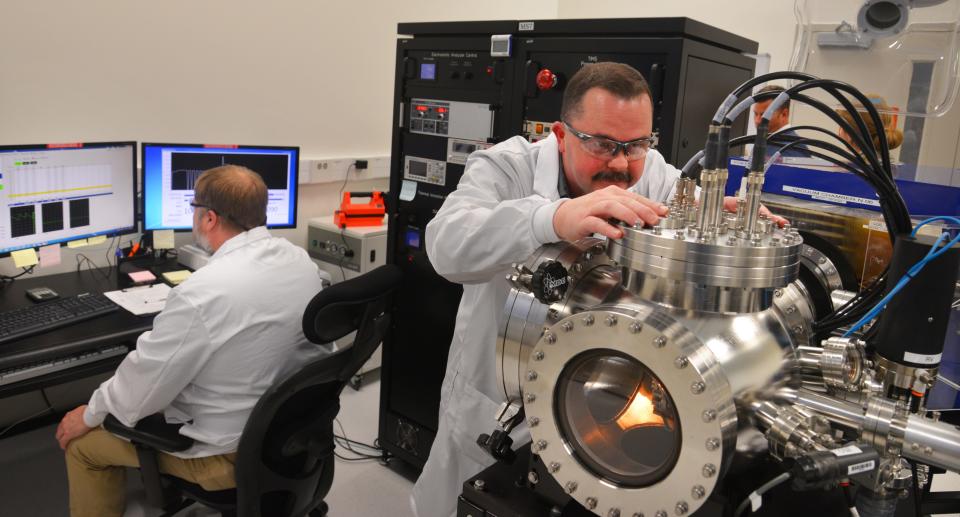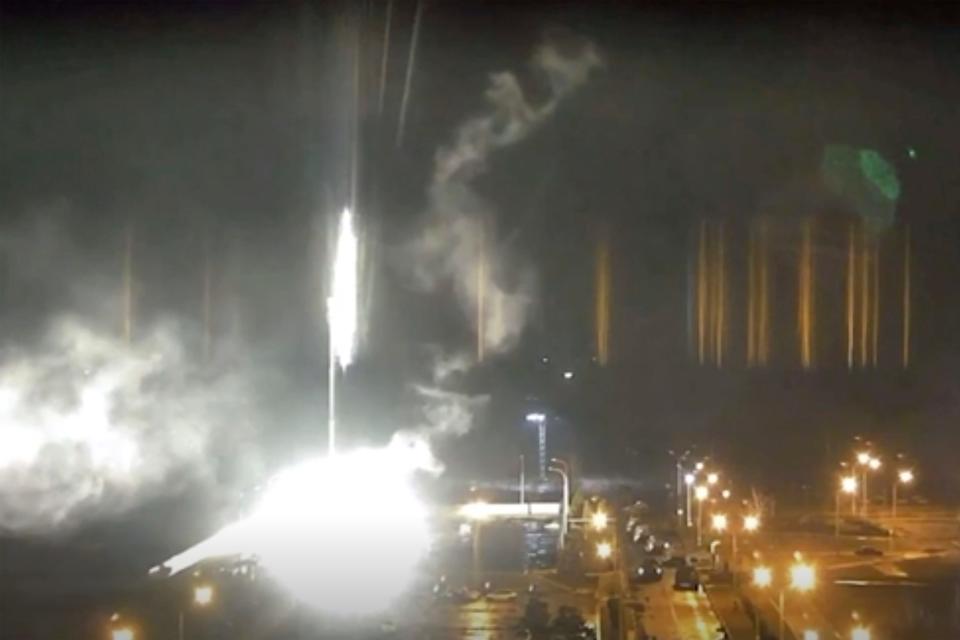Putin's nuclear threat: 'Nuke-sniffing' plane and Florida Air Force lab monitoring Ukraine
- Oops!Something went wrong.Please try again later.
As the world worries whether Russian President Vladimir Putin will unleash tactical nuclear weapons, a U.S. Air Force "nuke-sniffer" aircraft is positioned in Europe to detect radioactive clouds and collect air samples for scientific analysis.
The WC-135C/W Constant Phoenix had already deployed to Royal Air Force Mildenhall in the United Kingdom for pre-planned air-sampling missions before Russia's Feb. 24 invasion of Ukraine, said Rose Riley, Air Force deputy chief of media operations.
"The WC-135 flight/maintenance crew and more than a dozen AFTAC personnel have since been extended in theater and positioned to execute mobile nuclear air sampling taskings to support potential consequence management and force protection objectives," Riley said in an email.
AFTAC refers to the Air Force Technical Applications Center surveillance laboratory at Patrick Space Force Base. Personnel at this secretive, high-tech $158 million campus in Florida are trained to detect and analyze nuclear explosions around-the-clock via WC-135 aircraft and more than 3,600 sensors deployed around the globe.
“Here we are in the 21st century. And we are right back to where we were in the 1960s — with the potential of the actual use of nuclear weapons," said Robert Taylor, a history professor and interim dean at the Florida Institute of Technology.
“And that if that would be unleashed, the consequences are just unfathomable,” Taylor said.
Classified lab activities: Secret lab at Patrick Air Force Base watches for nuclear explosions worldwide, protecting United States
Protecting U.S. troops: Florida Tech developing battlefield rocket-detection system
Based at Offutt Air Force Base in Nebraska, the WC-135 Constant Phoenix is a specially equipped aircraft that collects atmospheric particles and gaseous effluents to monitor the 1963 Limited Test Ban Treaty.
Signed by the United States, Soviet Union and Great Britain, the treaty banned nuclear weapons testing in the atmosphere, space and underwater.
Back on Florida's Space Coast, sealed within white plastic sleeves marked with bar codes, aerial samples collected by WC-135 aircraft enter AFTAC through an exterior door marked “Caution: Radioactive Materials.”
Samples are routed to various rooms to undergo a battery of nuclear-forensic scientific procedures. This technical data is forwarded to U.S. military and political leaders.

AFTAC nuclear-explosion sensors are deployed in space, at sea, in the air, and on land on all seven continents including Antarctica. The AFTAC logo is a lithium atom surrounded by the slogan, "In God We Trust: All Others We Monitor."
Putin announced he was placing Russia's nuclear forces on high alert in late February, days after the invasion began.
"We warn against any threat of the use of chemical, biological and nuclear weapons or related materials," the leaders of the G7 nations said in a Thursday joint statement while meeting at NATO headquarters in Brussels.
"We recall Russia’s obligations under the international treaties to which it is a signatory, and which protect us all," the statement said.
'The little ship that could': Navy missile-radar ship Invincible ends global mission during Cape Canaveral ceremony
X-file solved?: Truth behind Roswell 'alien' that made a woman faint
Taylor teaches an American military history course that is mandatory for Florida Tech's Army ROTC cadets. He studied Russian history as a doctoral minor at Florida State University. And his grandfather fled his native Ukraine for the U.S. at the dawn of World War I.
“There's so many things we don't know. What is the Russian command and control over the use of their nuclear weapons? Can Vladimir Putin, on his own, order the use of battlefield tactical nuclear weapons or any of the Russian nuclear arsenal?” Taylor asked.
“I think the Biden administration has done a very good job in working hard to keep this conflict from spreading. Because once the nuclear Pandora's box is opened, who's going to be able to close it? It would be a catastrophe for humanity," he said.
"And you might say here in the United States, do we care what happens in Ukraine? Well, how long will it take the air in Ukraine to get over North America, filled with radiation from nuclear explosions? Not long," he said.

Of key note, AFTAC's scientists previously monitored radiation emitted from the 1986 Chernobyl nuclear power plant disaster in Ukraine, which was then part of the Soviet Union, and Japan's 2011 Fukushima Daiichi nuclear power plant accident.
Russian artillery shelled Ukraine's Zaporizhzhia Nuclear Power Plant earlier this month. Russian troops have captured the nuclear facility — the largest in Europe — along with the inactive Chernobyl plant.
AFTAC confirmed North Korea’s first nuclear test in 2006, then analyzed the nation's subsequent nuclear tests in 2016-17. Thursday, North Korea launched an intercontinental ballistic missile out over the sea.
"This launch is a brazen violation of multiple U.N. Security Council resolutions and needlessly raises tensions and risks destabilizing the security situation in the region," White House Press Secretary Jen Psaki said in a Thursday statement.
Rick Neale is the South Brevard Watchdog Reporter at FLORIDA TODAY (for more of his stories, click here.) Contact Neale at 321-242-3638 or rneale@floridatoday.com. Twitter: @RickNeale1
Support local journalism. Subscribe today.
This article originally appeared on Florida Today: Russian nuclear threat in Ukraine watched by Air Force lab in Florida

